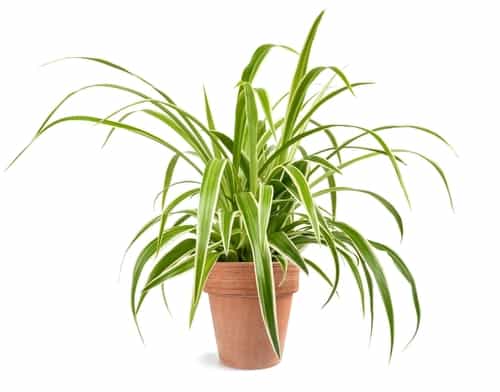Pothos and spider plants are two of the easiest houseplants to grow, and combining them in one pot can create a lush, green corner in your home. But can you plant pothos and spider plants together? The answer is yes! These two plants can coexist in the same pot without any problems.
Pothos is a trailing plant with heart-shaped leaves that can be variegated or solid green. It’s a fast grower and can reach lengths of up to 10 feet if left unchecked. Spider plants, on the other hand, have long, narrow leaves that grow in a rosette pattern.
They are known for their spiderettes, or baby spider plants, that grow on long stems and can be easily propagated. Both plants are low-maintenance and can thrive in a variety of light and soil conditions.
Key Takeaways
- Pothos and spider plants can be planted together in the same pot.
- Both plants have similar light and watering needs.
- Companion planting can benefit both the plants and the gardener.
Check out these other top posts in this category:
- Can You Plant Pothos and Philodendron Together?
- Can You Plant Pothos and Monstera Together?
- Can You Plant Peppers Deep Like Tomatoes?
The Basics of Pothos and Spider Plants
Pothos and spider plants are two of the most popular houseplants due to their ability to thrive in various indoor conditions. Both plants are known for their lush foliage and are easy to care for, making them a great choice for beginners.
Pothos Plants
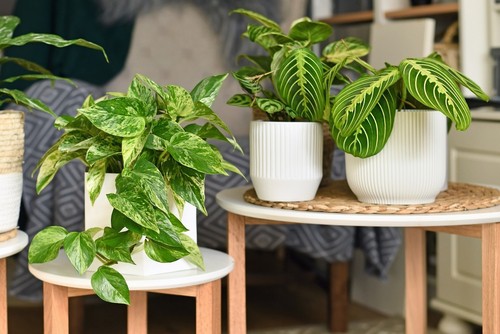
Pothos plants are known for their long, trailing vines and heart-shaped leaves. They are native to the Solomon Islands and can grow up to 20 feet long in their natural habitat. Pothos plants are available in various colors, including green, yellow, and variegated. They are also known for their air-purifying properties, making them a popular choice for indoor spaces.
Pothos plants prefer bright, indirect light, but can also tolerate low-light conditions. They prefer well-draining soil and require moderate watering. Overwatering can lead to root rot, so it’s important to let the soil dry out between watering sessions.
Spider Plants
Spider plants are known for their long, slender leaves that resemble spider legs. They are native to tropical and southern Africa and are popular for their air-purifying properties. Spider plants are available in various colors, including green, yellow, and variegated.
Spider plants prefer bright, indirect light and well-draining soil. They require moderate watering, and overwatering can lead to root rot. Spider plants also produce small, white flowers that eventually turn into small plantlets, which can be propagated and grown into new plants.
Planting Pothos and Spider Plants Together
Pothos and spider plants make great companions as they have similar care requirements. They both prefer bright, indirect light and well-draining soil. When planted together, they can create a beautiful display of lush foliage and different textures.
When planting pothos and spider plants together, it’s important to consider their growth habits. Pothos plants are known for their long, trailing vines, while spider plants grow in a more upright manner. To create a balanced display, it’s recommended to plant the pothos in a hanging basket and the spider plant in a pot on a table or stand.
Understanding Light and Watering Needs
Light Conditions
Both pothos and spider plants prefer bright, indirect light. Direct sunlight can scorch their leaves, so it’s best to avoid placing them in direct sun. However, they can tolerate low light conditions as well, although they may not grow as quickly or as vigorously as they would in brighter conditions.
If you’re planning to plant pothos and spider plants together, make sure they have similar light requirements. This will help ensure that both plants thrive and grow at a similar rate.
Watering Requirements
Pothos and spider plants have similar watering needs. They prefer to be kept moist, but not waterlogged. Overwatering can lead to root rot and other problems, so it’s important to let the soil dry out slightly between waterings.
When watering, make sure to saturate the soil thoroughly. This will help ensure that the roots receive enough water and nutrients to support healthy growth. It’s also a good idea to use a well-draining potting mix to help prevent water from sitting in the soil.
In general, pothos and spider plants are relatively low-maintenance and easy to care for. By providing them with the right light and water conditions, you can help ensure that they thrive and grow together in harmony.
Soil and Drainage Essentials
Potting Soil
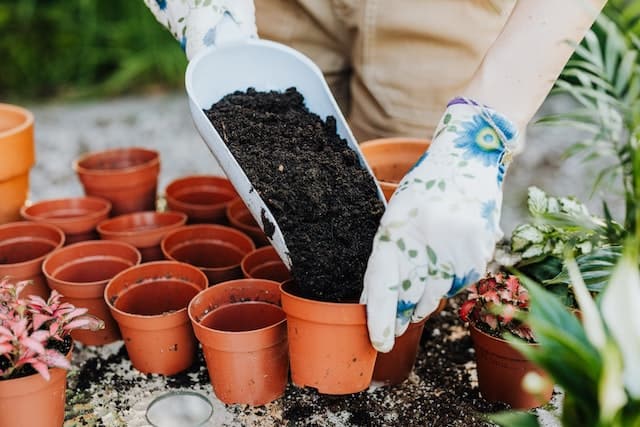
When planting Pothos and Spider Plants together, it is important to use a well-draining potting soil mix that balances water-holding capacity and drainage. The ideal soil pH for Pothos and Spider Plants is between 6.0-6.5.
A good mix is two parts peat moss to one part perlite to one part pine bark fines. This mixture provides ample drainage while retaining enough moisture for healthy root growth.
Drainage
Proper drainage is essential for healthy plant growth. When planting Pothos and Spider Plants together, ensure that the pot has adequate drainage holes to prevent water from accumulating at the bottom. Excess water can lead to root rot, which can be fatal to plants.
To ensure good drainage, place a layer of gravel or small stones at the bottom of the pot before adding the soil mix. This layer helps to prevent soil from clogging the drainage holes and allows water to flow freely through the soil.
It is also important to avoid overwatering the plants. Allow the soil to dry out slightly between waterings, and avoid watering the plants if the soil is still moist. Overwatering can lead to root rot and other fungal diseases that can damage the plants.
When planting Pothos and Spider Plants together, it is important to choose a pot that provides adequate space for both plants to grow. As these plants tend to grow quickly, choose a pot that is slightly larger than the current root ball to allow room for growth.
Companion Planting Pothos and Spider Plants
Companion planting is an age-old gardening technique that involves planting different plants together to benefit each other. Pothos and spider plants are two popular indoor plants that can be planted together. In fact, companion planting with pothos and spider plants offers multiple benefits.
Benefits of Companion Planting Pothos and Spider Plants
When pothos and spider plants are planted together, they enhance the growth and health of both plants. Studies have shown that when plants cohabit, they actually grow stronger and healthier. Companion planting also provides chemical stimulation and support between plant companions, which can help them thrive.
Another benefit of companion planting pothos and spider plants is that it helps maintain the proper humidity level in the planted space. Both plants require similar water and soil requirements, and they prefer bright, indirect light. Therefore, they can be planted together in the same pot or container.
Plant Combinations
Pothos and spider plants are not the only plants that can be planted together. Other plants that can be planted together with pothos include jade plants, asparagus ferns, and butterfly palms. These plants have qualities similar to pothos, which is why it is easier to plant them together.
Contrast and Balance
When planting pothos and spider plants together, it is important to create contrast and balance. Pothos has heart-shaped leaves that can be variegated or solid green, while spider plants have long, slender leaves that are typically green with white stripes. By combining these plants, you can create a visually appealing and balanced display.
Other Suitable Houseplants for Companion Planting
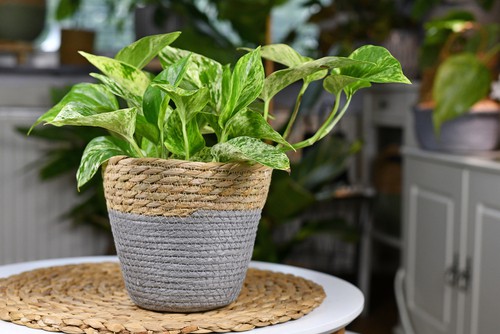
In addition to spider plants, there are several other houseplants that can be suitable for companion planting with pothos. Here are some of the most popular ones:
- Philodendrons: Philodendrons are known for their heart-shaped leaves and are easy to care for, making them a great companion plant for pothos. They also come in a variety of colors and sizes, such as the neon pothos and the lime pothos.
- Peace Lilies: Peace lilies are another popular houseplant that can be grown with pothos. They require similar watering and lighting conditions and can add a touch of elegance to any room.
- Dracaena: Dracaena is a genus of plants that includes several species, such as the dragon tree and the corn plant. They are known for their striking foliage and can be a great addition to a pothos display.
- Succulents: Succulents, such as the jade plant and the ponytail palm, can also be grown with pothos. They require well-draining soil and bright, indirect light, making them a great choice for a sunny windowsill.
- Ferns: Ferns, such as the asparagus fern and the bird’s nest fern, can add a touch of greenery and texture to a pothos display. They prefer moist soil and indirect light.
- Snake Plant: Snake plants, also known as mother-in-law’s tongue, are a hardy plant that can be grown with pothos. They require minimal watering and can tolerate low light conditions.
- Begonia: Begonias are a colorful and easy-to-grow plant that can be grown with pothos. They prefer bright, indirect light and well-draining soil.
- Monstera: Monstera, also known as the Swiss cheese plant, is a popular houseplant that can be grown with pothos. They require bright, indirect light and well-draining soil.
- Butterfly Palm: Butterfly palms are a tall, elegant plant that can be grown with pothos. They require bright, indirect light and well-draining soil.
- Episcia and Calathea: Episcia and Calathea are two plants that can be grown with pothos. They have similar water and soil requirements and can add a touch of color to a pothos display.
These are just a few examples of the many houseplants that can be grown with pothos. When choosing companion plants, it is important to consider the plant’s lighting and watering requirements, as well as its size and growth habits. With a little bit of research and experimentation, you can create a beautiful and thriving indoor garden.
Benefits and Challenges of Grouping Plants
Grouping plants together can offer several benefits, including enhanced growth and health of both plants, chemical stimulation and support between plant companions, proper humidity level maintenance, and improved aesthetic appeal in the planted space.
This mutual partnership between plants can also enhance their air-purifying abilities, making them more effective in removing toxins and pollutants from the air.
However, there are also some challenges associated with grouping plants together. Negligence in caring for one plant can affect the health of the other plants in the group. Additionally, some plants may require different levels of humidity, light, and watering, which can be difficult to maintain when mixed together.
When mixing plants, it is important to choose houseplant combinations that complement each other’s physical support and air-purifying qualities. For example, pothos and spider plants have similar watering needs and prefer bright, indirect light, making them an ideal combination to grow together.
It is also important to note that some plants may not thrive when grouped with others. Weeping figs, for example, release a chemical that can be harmful to other plants. Therefore, it is essential to research and choose compatible plants when grouping them together.
Temperature and Humidity Considerations
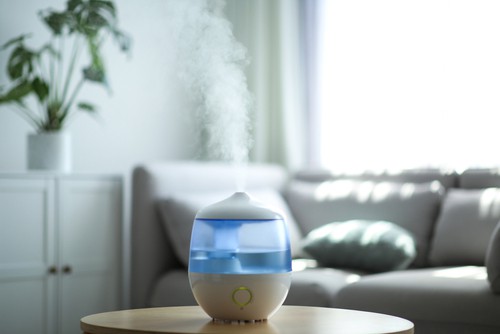
Temperature
When planting pothos and spider plants together, it’s important to consider temperature requirements. Spider plants grow best in a room with ambient temperatures between 65-85ºF, while pothos prefer temperatures between 70-90ºF. Both plants can tolerate temperatures outside of their preferred range, but extreme temperatures can damage the plants.
It’s important to avoid placing the plants near drafty windows, air conditioning units, or heating vents, as sudden temperature changes can shock the plants. If the temperature in the room drops below 60ºF, the plants may stop growing and their leaves may turn yellow.
Humidity
Both pothos and spider plants prefer moderate to high humidity levels, between 40-80%. If the air is too dry, the plants may develop brown leaf tips or edges. In-room humidifiers or humidity trays can be beneficial to provide the plants with ideal growing conditions.
When watering the plants, it’s important to avoid getting water on the leaves, as this can increase the risk of fungal growth and other diseases. Instead, water the soil directly and allow the excess water to drain out of the bottom of the pot. If the soil is consistently wet, the roots may rot and the plant may die.
Nutrition and Fertilization
When it comes to caring for Pothos and Spider Plants, proper nutrition and fertilization are essential for their growth and overall health. These plants require regular feeding to ensure they receive the necessary nutrients to thrive.
Nutrients
Both Pothos and Spider Plants require a balanced mix of nutrients to grow well. They need nitrogen, phosphorus, and potassium, as well as trace elements such as iron, magnesium, and calcium.
Nitrogen is essential for leaf growth, while phosphorus helps with root development and flowering. Potassium is necessary for overall plant health and disease resistance.
Fertilization
Fertilizing Pothos and Spider Plants is relatively easy. These plants benefit from regular feeding during the growing season, which is typically from spring to fall. Fertilize once a month with a balanced, water-soluble fertilizer. It is best to dilute the fertilizer to half strength to avoid overfeeding, which can lead to burnt roots.
When it comes to fertilizing, it is essential to follow the instructions on the label carefully. Overfeeding can be just as harmful as underfeeding. If the plants start to show signs of yellowing leaves or stunted growth, it may be a sign of overfeeding. In this case, it is best to flush the soil with water to remove any excess fertilizer.
Gardening Tips for Pothos and Spider Plants
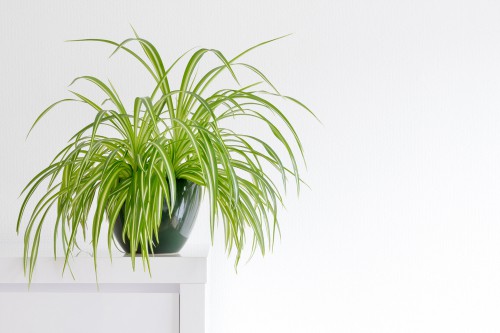
When it comes to indoor gardening, pothos and spider plants are two popular choices that are easy to care for and maintain. Here are some tips to help you grow healthy and beautiful pothos and spider plants:
Growth Habits
Pothos and spider plants have different growth habits. Pothos is a trailing plant that can grow up to 10 feet long if left unchecked. Spider plants, on the other hand, grow in a rosette shape and produce long, thin foliage. Knowing the growth habits of these plants can help you choose the right pot size and placement.
Compatibility
Pothos and spider plants are both low-maintenance plants that require similar care. They have similar watering needs and prefer bright, indirect light. This makes them compatible plants that can be planted together in the same pot.
However, it is important to choose a pot that is large enough to accommodate both plants and provide enough space for their roots to grow.
Gardening Tips
Here are some gardening tips to help you grow healthy pothos and spider plants:
- Use a well-draining potting mix that is rich in nutrients.
- Water the plants when the top inch of soil is dry to the touch.
- Avoid overwatering, as this can lead to root rot.
- Fertilize the plants once a month during the growing season.
- Prune the plants regularly to promote bushier growth and prevent them from becoming too leggy.
- Keep the plants away from drafts and direct sunlight, as this can damage their leaves.
- Monitor the plants for signs of pests, such as spider mites or mealybugs, and treat them promptly if necessary.
Aesthetic Considerations
When it comes to planting pothos and spider plants together, aesthetic considerations play an important role. These two plants have different shades of greens, with pothos having lighter green leaves and spider plants having darker green leaves with white stripes.
The combination of these two plants creates a vibrant display of contrasting colors that can add visual interest to any space.
In addition to their color, the textured leaves of pothos and spider plants also complement each other. Pothos has heart-shaped leaves with a glossy texture, while spider plants have long, thin leaves with a slightly rough texture. When placed together, the different leaf textures create a dynamic visual effect that can add depth and dimension to a room.
Both pothos and spider plants are tropical houseplants, which means they thrive in warm and humid conditions. These plants are often used to create a tropical atmosphere in homes and offices, and when planted together, they can create a cohesive tropical theme.
The combination of their dark green leaves and contrasting textures can add a touch of the exotic to any space.
Frequently Asked Questions
What plants can be planted with pothos?
Pothos is a versatile plant that can be paired with many other indoor plants. Some popular choices include snake plants, philodendrons, and peace lilies. These plants have similar care requirements and can thrive in the same growing conditions as pothos.
What plants go well with spider plants?
Spider plants can be paired with a variety of other indoor plants, including pothos, snake plants, and ferns. These plants have similar care requirements and can create a lush, green corner in your home when planted together.
Can you mix spider plants with other plants?
Yes, spider plants can be mixed with other indoor plants. However, it is important to choose plants with similar care requirements and growing conditions. Mixing plants with different needs can lead to one plant thriving while the other struggles.
Can spider plants share pots with other plants?
Yes, spider plants can share pots with other plants as long as they have similar care requirements. When planting multiple plants in one pot, it is important to choose plants that have similar water and light needs.
What are some good companion plants for pothos?
Some good companion plants for pothos include snake plants, philodendrons, and peace lilies. These plants have similar care requirements and can create a visually appealing indoor garden when planted together.
Is it okay to group indoor plants together?
Yes, grouping indoor plants together can create a visually appealing indoor garden. However, it is important to choose plants with similar care requirements and growing conditions. Grouping plants with different needs can lead to one plant thriving while the other struggles.

Hey, I’m Lisa and I’ve been an avid gardener for over 30 years. I love writing, talking and living in the garden! Feel free to connect with me on my socials below

